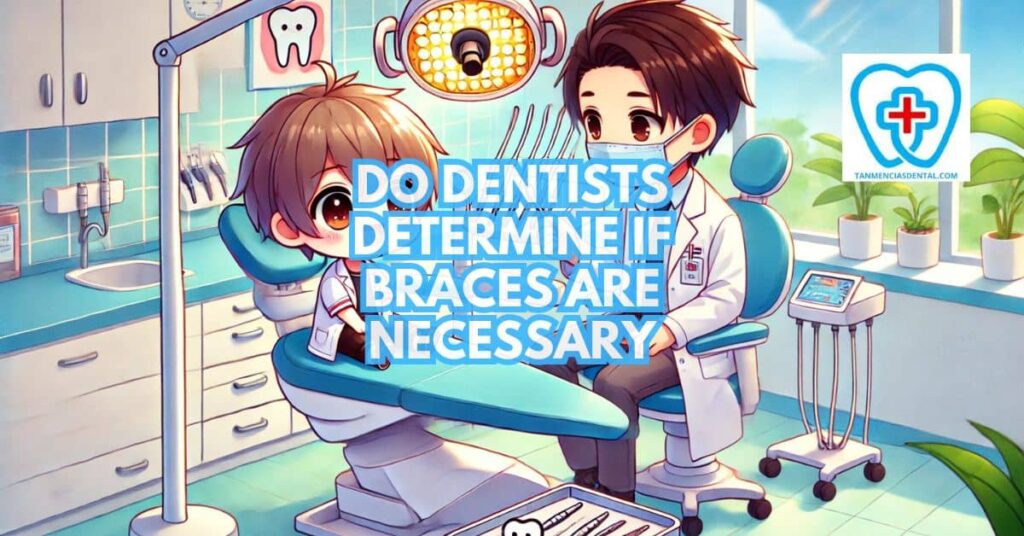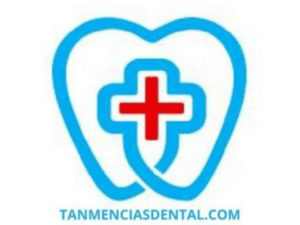When parents spot crooked teeth or an uneven bite, they may wonder, how do dentists determine if braces are necessary?
The process starts with a careful evaluation of the patient’s teeth, jaw, and bite to check for any problems that could affect oral health.
Dentists and orthodontists look at factors like the child’s age, the stage of tooth development, and how their teeth and jaws function together.
They also consider habits like thumb-sucking or grinding, which can impact alignment.
This thorough assessment helps create a treatment plan tailored to the patient’s unique dental needs.
1. Crooked Teeth and Uneven Bites: Signs That Your Child May Need Braces
Crooked teeth and uneven bites are not just aesthetic concerns; they are significant signs that your child may need braces.
Such conditions can create difficulties in chewing and speaking and lead to the improper wear of teeth over time.
When teeth are crooked or crowded, maintaining proper dental hygiene becomes challenging, increasing the risk of cavities and gum diseases.
Early detection and treatment with braces are crucial, as they prevent the development of more complex dental issues in the future.
Orthodontists rely on thorough visual examinations and detailed dental records to diagnose these orthodontic problems accurately and decide if your child should wear braces.
By addressing these dental issues promptly, braces can significantly improve both the functionality and appearance of your child’s teeth.
If you’re unsure how to know if you need braces, consulting with an orthodontist is the best step towards ensuring your child’s oral health and confidence.
2. Looking Beyond the Smile: Dental Considerations for Orthodontic Treatment
Orthodontic treatment goes beyond improving the appearance of teeth; it plays a crucial role in addressing various dental problems that affect overall oral health.
In dentistry, a comprehensive evaluation includes assessing gum health, jaw alignment, and the strength of the underlying bone.
Dentists often look for signs of gum disease or bone loss, as these conditions can influence the success of braces.
If complex dental problems are detected, a referral to a specialist, such as an orthodontist or periodontist, may be necessary.
Additionally, dentists evaluate how the upper and lower jaws work together, as poor alignment can lead to issues like difficulty chewing or jaw pain.
Identifying these factors early helps prevent long-term complications and ensures that braces provide both cosmetic and functional benefits.
Proper orthodontic care not only improves the smile but also supports the health of the entire mouth.
🦷 The Potential Oral Health Diseases Linked to Inadequate Brushing
3. X-Ray Advantage: How Dental Imaging Helps Dentists Determine if Braces Are Necessary
Dental X-rays are indispensable tools that provide dentists with a comprehensive view of the jaw’s structure, the position of teeth below the gum line, and the condition of tooth roots.
These detailed images reveal critical information that cannot be seen during a standard dental examination, such as the arrangement of adult teeth that have not yet emerged.
By studying these X-rays, dentists can identify developmental irregularities, like impacted teeth or significant misalignments, indicating the need for braces.
The insights gained from X-rays allow dentists to meticulously plan the necessary movements of the teeth, ensuring each phase of the treatment is precisely tailored to the patient’s needs.
Plus, X-rays are vital for monitoring the progress of the treatment, helping to make ongoing adjustments, and ensuring that the alignment process stays on course.
This level of imaging is also crucial in preventing broader oral health issues, such as tooth decay and gum disease, by helping patients and professionals understand more about areas difficult to clean.
Regular dental imaging thus supports effective treatment planning and maintenance, including teaching patients how to better brush and floss around complex dental structures.
🦷 How to Locate an Affordable Oral Surgeon While Ensuring High-Quality Care
4. Age and Orthodontics: When to Consider Getting Braces for Your Child
The best time to start orthodontic treatment depends on how well the child’s teeth and jaws have developed.
Dentists often suggest that children get their first orthodontic checkup by age seven to spot problems early.
This early evaluation helps detect issues like crowded or crooked teeth or improper jaw alignment before they worsen.
While dental braces may not be necessary right away, regular monitoring ensures that they are used at the right stage of development.
Timing is crucial because starting too early could lead to prolonged treatment, while waiting too long might make it harder to straighten teeth effectively.
Factors such as the replacement of baby teeth with permanent ones and the growth of the jaw are closely watched.
Early planning and intervention can help ensure the braces work efficiently and provide the best results for both function and appearance.
🦷 Key Dental Tools Essential for Effective Teeth Cleaning

5. A Unique Smile Deserves Individual Care: Why Orthodontic Treatment is Customized
Each child’s dental anatomy is unique, making personalized treatment plans essential for effective orthodontic care.
Customization in orthodontics takes into account the specific alignment and spacing issues of the individual, as well as facial symmetry and the overall dental development of the child.
This tailored approach is not solely about achieving a visually perfect smile but also ensuring the proper alignment of the bite and jaw, which are crucial for overall oral health.
For example, braces may help correct an overbite, where the upper front teeth extend too far over the lower teeth, potentially causing jaw pain and wear on the lower teeth.
Orthodontists employ detailed molds and advanced imaging techniques to meticulously plan treatments that cater specifically to each unique smile.
The ultimate goal is to provide an outcome that is not only balanced and aesthetically pleasing but also functional and respectful of the child’s natural features.
This individualized care ensures that each orthodontic journey leads to a healthy, beautiful smile tailored to each child’s specific needs.
🦷 Important Qualities to Look for in a Child-Friendly Dentist: A Guide for Parents
6. Traditional Braces vs. Clear Aligners: Exploring Alternatives to Get the Perfect Smile
When considering braces, there are several options available, each with its own advantages and specific suitability.
Traditional metal braces are very effective for complex dental issues and are often preferred for their precision in tooth movement.
Clear aligners, on the other hand, offer a less visible, more aesthetic alternative and are favored for their convenience and comfort, especially by teenagers and adults.
The choice between these options will depend on the specific orthodontic needs of the child, their lifestyle, and their personal preferences.
Dentists and orthodontists will guide families through these choices, highlighting the pros and cons based on the child’s specific dental conditions.
🦷 Is it Possible to Clean Your Teeth Using Only Your Fingers?
7. Different Types of Braces and Aligners
There are various types of braces and aligners available besides the traditional metal braces and clear aligners.
Lingual braces are placed behind the teeth, making them invisible from the front.
Self-ligating braces use special clips instead of elastic bands, which can make them more comfortable and easier to clean.
Ceramic braces match the color of your teeth, making them less noticeable than metal braces.
Understanding these options helps parents and patients choose the best type of orthodontic appliance based on their appearance preferences, treatment needs, and daily activities.
🦷 The Role of Comprehensive Dental Care in Promoting Overall Health
8. Early Intervention or Waiting Game? Weighing the Pros and Cons of Braces for Your Child
Deciding the right time for braces is a balance between early intervention and waiting for the appropriate developmental stage.
Early treatment can simplify later adjustments as the child grows, potentially reducing the complexity and duration of future orthodontic work.
However, starting too early might mean a longer overall period of treatment if braces are applied as each phase of dental development occurs.
On the other hand, waiting too long may lead to more invasive treatments if problems worsen.
It is crucial to consult with an orthodontist to weigh these factors and make an informed decision that considers the child’s current oral health, expected dental development, and overall well-being.
🦷 Proper Tooth Brushing Techniques: A Comprehensive Guide to Achieving a Healthier Smile
9. Your Consultation with the Orthodontist: What to Expect When Deciding Whether Your Child Needs Braces
During your consultation, the orthodontist will evaluate your child’s teeth and jaws to determine if and when braces are necessary.
This visit typically involves a physical examination, dental X-rays, and discussing any concerns you or your child might have.
The orthodontist will explain potential treatment options and timelines, helping you understand each step of the proposed plan.
This is also the time to discuss financial and insurance considerations, ensuring you are fully informed before proceeding.
It’s important to see this appointment as an opportunity to build a relationship with the orthodontist, as they will be a crucial part of your child’s dental care team.
🦷 The Safety and Effectiveness of Brushing Teeth with Salt and Toothpaste: A Balanced Evaluation
10. Beyond Treatment: The Importance of Retainers for Long-Term Smile Care
After the active phase of orthodontic treatment, retainers are crucial for maintaining the new position of the teeth.
Retainers help to stabilize the dental adjustments made by braces, preventing teeth from drifting back to their original positions.
Orthodontists typically prescribe retainers to be worn full-time for a period of time, followed by nighttime wear indefinitely.
Proper retainer use is as important as the initial treatment, as it ensures lasting results.
Ignoring this phase can lead to needing corrective treatment again, so commitment to retainer use is essential for long-term success.
🦷 Is Brushing Teeth with Vinegar Safe? An Examination of Its Benefits, Risks, and Alternatives
11. Confidence and a Healthy Smile: The Lasting Benefits of Orthodontic Treatment
The benefits of orthodontic treatment extend far beyond the cosmetic improvements to the teeth.
Properly aligned teeth contribute to better oral hygiene, reducing the risk of decay and gum diseases by making teeth easier to clean.
In addition, a well-aligned bite improves chewing and digestion and can alleviate or prevent jaw pain and headaches associated with malocclusions.
The boost in self-esteem that comes from having a healthy, beautiful smile is an invaluable benefit, influencing social interactions and self-perception.
Orthodontic treatment is an investment in your child’s health and well-being.
👨⚕️ Conclusion
Orthodontists combine their detailed knowledge of dental science with advanced technological tools to determine the necessity, timing, and type of braces for each patient.
Their decisions are grounded in years of specialized training and experience, focusing on achieving the best possible outcomes for dental health and aesthetics.
When parents entrust their child’s orthodontic care to these professionals, they can be confident in receiving expert guidance tailored to their child’s unique needs.
It is this expertise that ensures that each orthodontic journey leads to not only a more attractive smile but a healthier one as well.
As you navigate your child’s potential need for braces, remember that each step is taken with a deep understanding of how to bring out the best in your child’s smile.
😊 Self-Promotion
Visit us at Tan-Mencias Dental Clinic in Parang, Marikina City, where your smile and dental health are our top priorities!
Our friendly team is eager to provide you with the highest quality of dental care in a warm and welcoming environment.
For any questions or to schedule an appointment, feel free to call us at 9171451074.
You can also reach out through our website’s contact form or send a message to our Facebook page.
We look forward to helping you achieve the beautiful, healthy smile you deserve!

